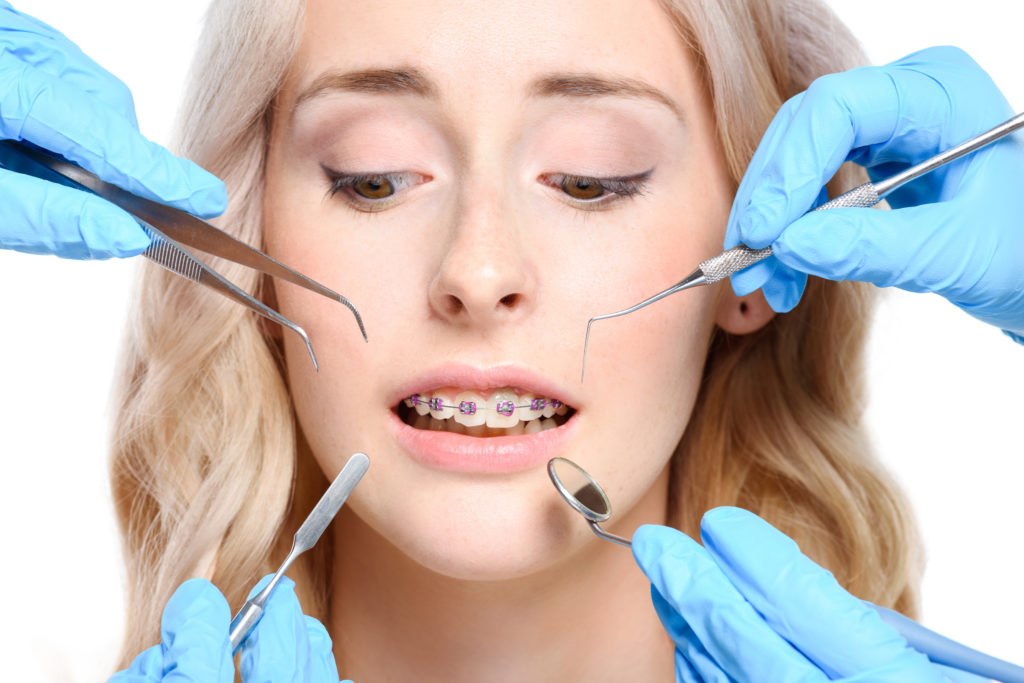It may surprise you to know that we humans have been concerned with the look and function of our teeth long before the modern times. While original methods are a far cry from the sleek technology used today, you can’t help but be impressed by the ingenuity of our forefathers.
Take a look at the evolution of orthodontic braces:
Ancient Greece and Rome
Apparently Aristotle and Hippocrates had knocked around ideas for straightening teeth even as far back as 400 and 300 BC and archaeologists have proof that the Etruscans used appliances to maintain spaces and prevent collapses of teeth because they buried their dead wearing them. Also in a Roman tomb a dental device was found along with documentation on how to use it.
18th Century France
Pierre Fauchard, a French dentist in the 18th century who is considered the father of modern dentistry, wrote a book in 1728 about methods for straightening teeth. He also was known to use a device called “blandeau” to widen the upper palate. A few years later in 1754 another dentist Louis Bourdet published his own book where he suggested improvements to the blandeau. He is also considered the first dentist to pull bicuspids to reduce tooth crowding.
19th Century
It wasn’t until the 19th century though that Orthodontics as a separate dental specialty was defined. The term orthodontia was first used in 1841 by Joachim Lafoulon. In 1819 the first wire crib was used and this is the time that materials like precious metals, steel, gum rubber and vulcanite were used to create loops, hooks, spurs and ligatures to straighten teeth.
In addition, the first gum elastics were used by Edward Maynard in 1843 and E.J. Tucker first used rubber bands for braces in 1850.
20th Century
Edward Angle founded in the American Society of Orthodontia in 1901, which was renamed the American Association of Orthodontists in the 1930s. Angle also developed the first classification system for malocclusions.
By the 1960s gold was a popular material choice for braces. Before the 1970s, braces were wrapped around the teeth, but by the mid-70s, orthodontist began directly adhering the brackets to the teeth, and lingual braces where the braces are adhered to the back of the teeth were started to be used a lot.
Orthodontics Today
Today with all the advances in modern orthodontics, you have so many more options than ever before. Metal braces adhered to the front of the teeth is still the most common treatment, but for people who are concerned about the braces being noticeable, there are other options like lingual braces, ceramic braces and Invisalign aligners.
Here is what is available today:
Metal braces
- These are permanently adhered to your teeth and can only be taken off by the orthodontist at the end of treatment
- The orthodontist tightens the wires during treatment to help shift the teeth
- There are certain food and drink restrictions with this treatment
- May have to wear them for 3 or more years depending on how your treatment goes
- Most bite and alignment issues can be treated by metal braces
Invisalign
- They are clear plastic aligners that can be easily removed
- Can be removed to eat and to brush and floss your teeth
- Treatment includes a new set of aligners every two weeks as your teeth shift into proper alignment
- Invisalign can also handle both simple and complicated alignment issues
Ceramic Braces
- These braces are made of ceramic which blends into your teeth better and are invisible.
- In all other ways though these braces are like the metal ones. You still have food and drink restrictions and will need the wires tightened as the teeth shift.
- Most bite and alignment issues can be treated by ceramic braces.
Lingual Braces
- Lingual braces are attached to the back of the teeth to make them more invisible.
- They can be a little harder to adjust to and can cause speech difficulties at first.
- You need to be extra diligent with oral hygiene because it can be harder to clean the backs of the teeth where the brackets are.
Six Month Smiles
- With Six Month Smiles, clear braces are put on only a few teeth so treatment takes less time.
- This treatment though focuses more on appearances than function and structure. If you have serious bite and alignment issues this method won’t correct it.
Finding the Right Orthodontist
Take the time to research an orthodontist thoroughly. You are only setting yourself up for failure if you just make an appointment with the first orthodontist you find online. Braces are a big commitment and affect both the health of your teeth and the health of your pocketbook. Your decision should never be rushed. Often times, your dentist will give you a referral, but it is also a good idea to ask your friends and family for referrals too. Do a google search as well and look for reviews. Experience and credentials are, of course, important, but also see if they have stayed up on all the latest trends in orthodontic care.
Once you are armed with some information, schedule consultations with a few of your most promising leads. This is the time to get any unanswered questions addressed and for you to get a feel for the friendliness of the staff and how clean and technologically up-to-date the office is.
Make sure you consider all treatment options as well. A good orthodontist will go over thoroughly what will and won’t work for your particular situation.
Cost can also be a big factor. Dental insurance will often pay for some of the treatment and then you have to put up the difference. If you have money saved up, then you can simply pay upfront for whatever you need to. If you don’t have a cushiony savings account, then you will need to see if they offer any payment plans. Choose an orthodontist who has your best interest at heart and will truly work with you on finding options that fit your budget.
For more information about orthodontic care today, call Orthodontics Limited today.



